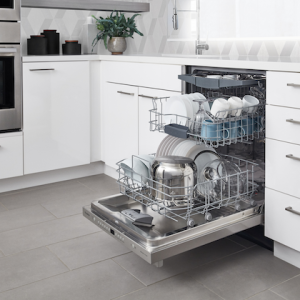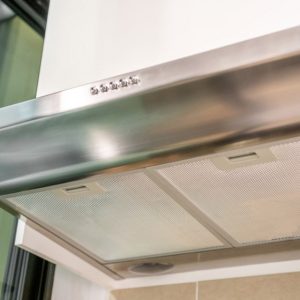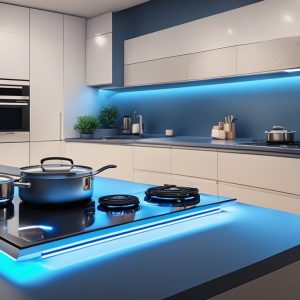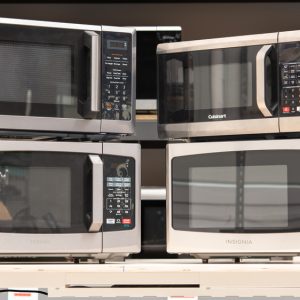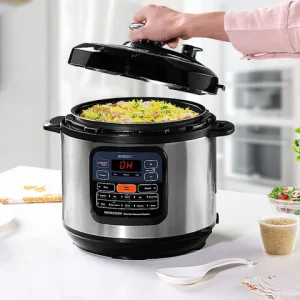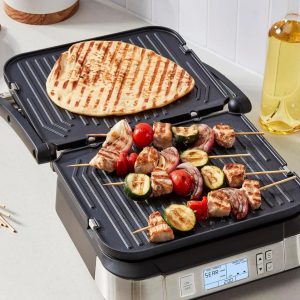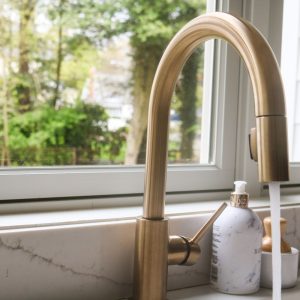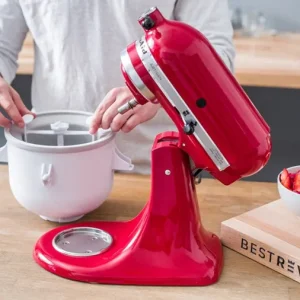
Kitchen cutting boards are an essential tool in any home cook’s arsenal. They provide a safe and convenient surface for chopping, slicing, and dicing ingredients, while also protecting your countertops from scratches and damage. However, with so many options available on the market, it can be challenging to choose the right one for your needs. In this guide, we will cover everything you need to know about selecting the perfect kitchen cutting board.
What Are Kitchen Cutting Boards?
Kitchen cutting boards are flat surfaces used for chopping, slicing, and dicing ingredients during food preparation. They come in various sizes, shapes, and materials, including wood, plastic, bamboo, and glass.
Who Needs a Kitchen Cutting Board?
Anyone who prepares food in their kitchen could benefit from having a cutting board. Whether you’re a professional chef or a home cook, a sturdy and reliable cutting board is essential for safely and efficiently preparing ingredients.
Pros and Cons of Different Types of Kitchen Cutting Boards
Wood Cutting Boards
Pros
- Durable and long-lasting
- Natural antimicrobial properties that help prevent bacterial growth
- Gentle on knives, reducing wear and tear on blades
- Aesthetically pleasing and adds warmth to your kitchen
Cons
- Can be harder to clean and sanitize than other materials
- More susceptible to damage from moisture and heat
- Require regular oiling to maintain their quality and prevent cracking
Plastic Cutting Boards
Pros
- Affordable and widely available
- Easy to clean and sanitize
- Lightweight and easy to maneuver
- Often dishwasher safe
Cons
- Prone to deep gouges and knife marks, which can harbor bacteria
- Not as durable as other materials and may need to be replaced more frequently
- Can become discolored over time from use and cleaning
Bamboo Cutting Boards
Pros
- Durable and long-lasting
- Lightweight and easy to maneuver
- Natural antimicrobial properties that help prevent bacterial growth
- Environmentally friendly, as bamboo is a renewable resource
Cons
- Can be harder to clean and sanitize than other materials
- Can become discolored over time from use and cleaning
- Not as gentle on knives as wood cutting boards
Glass Cutting Boards
Pros
- Easy to clean and sanitize
- Resistant to moisture, heat, and stains
- Non-porous surface that won’t harbor bacteria
- Aesthetically pleasing and adds sophistication to your kitchen
Cons
- Hard surface can quickly dull knives
- Prone to chipping or cracking if dropped or exposed to sudden temperature changes
- Slippery surface can be hazardous when chopping food
How to Choose the Right Kitchen Cutting Board
When selecting a kitchen cutting board, consider the following factors:
- Material: Choose a material that fits your preferences and needs. Wood and bamboo are durable but require more maintenance, while plastic and glass are easier to maintain but less durable.
- Size: Consider the size of your kitchen workspace and the types of ingredients you typically prepare. Choose a cutting board that provides enough space for your needs without taking up too much countertop real estate.
- Thickness: Thicker boards offer more stability and durability, while thinner boards are lighter and easier to maneuver.
- Shape: Choose a shape that works best for your needs. Rectangular cutting boards provide the most workspace, while circular or irregularly shaped boards can be more aesthetically pleasing.
- Maintenance: Consider how easy it is to clean and sanitize your cutting board. Some materials require special care, such as regular oiling for wood cutting boards.
Alternatives to Kitchen Cutting Boards
While kitchen cutting boards are the standard tool for preparing ingredients, there are alternative options available, including:
- Ceramic knives, which can be used on any surface
- Silicone baking mats, which can double as a non-slip surface for chopping and slicing
- Butcher blocks, which provide a larger workspace for preparing ingredients
Step-by-Step Guide to Maintaining Your Kitchen Cutting Board
- Clean your cutting board after each use with hot soapy water and a clean sponge or dishcloth.
- Sanitize your cutting board regularly by spraying it with a solution of one part vinegar to three parts water and allowing it to sit for a few minutes before rinsing.
- Dry your cutting board thoroughly after cleaning to prevent moisture damage.
- Oil your wood or bamboo cutting board regularly with food-grade mineral oil to prevent cracking and maintain its quality.
- Store your cutting board in a dry area away from heat sources to prevent warping or cracking.
Tips for Using Your Kitchen Cutting Board
- Use a separate cutting board for meat and poultry to avoid cross-contamination.
- Avoid cutting hard or frozen foods on glass cutting boards to prevent chipping or cracking.
- Keep a damp towel under your cutting board to prevent it fromslipping during use.
- Use a separate cutting board for foods with strong odors, such as garlic or onions, to prevent flavor transfer.
- Use a knife sharpener or honing steel regularly to keep your knives in top condition and reduce wear on your cutting board.
Comparing Popular Kitchen Cutting Board Brands
John Boos

Made in the USA, these high-quality wood cutting boards come in a range of sizes and styles to fit any kitchen. They are known for their durability, natural antimicrobial properties, and attractive appearance.
OXO Good Grips

These plastic cutting boards are affordable, easy to clean, and feature non-slip edges for added stability during use. They are also dishwasher safe for added convenience.
Totally Bamboo

Made from sustainable bamboo, these cutting boards feature an eco-friendly design that is gentle on knives and naturally resistant to bacteria. They come in a variety of shapes and sizes, making them a versatile option for any kitchen.
The Best Kitchen Cutting Board for Your Needs
Ultimately, the best kitchen cutting board for your needs will depend on your preferences and cooking habits. Consider the factors listed above, such as material, size, and maintenance requirements, when selecting a cutting board. If you’re unsure which type of cutting board is right for you, consider investing in a few different options to see which one you prefer over time.
Conclusion
A good kitchen cutting board is an essential tool for any home cook. By considering factors such as material, size, and maintenance requirements, you can choose a cutting board that fits your needs and preferences. Whether you opt for a wood, plastic, bamboo, or glass cutting board, proper maintenance will help prolong its lifespan and ensure it stays in top condition for years to come.
FAQs
- Q: How often should I oil my wood cutting board? A: It’s recommended to oil your wood cutting board once a month or as needed to prevent cracking and maintain its quality.
- Q: Can I use bleach to sanitize my cutting board? A: It’s generally not recommended to use bleach on cutting boards, as it can damage the surface and leave behind harmful residue.
- Q: How long do plastic cutting boards typically last? A: Plastic cutting boards can last anywhere from 1-5 years, depending on their quality and frequency of use.
- Q: Is it safe to put my cutting board in the dishwasher? A: It depends on the type of cutting board. Plastic and some bamboo cutting boards are dishwasher safe, but wood and glass cutting boards should be washed by hand.
- Q: Can I cut meat or poultry on a glass cutting board? A: It’s generally not recommended to cut meat or poultry on a glass cutting board, as it can cause the surface to chip or crack. Use a separate cutting board designated for meat and poultry instead.


